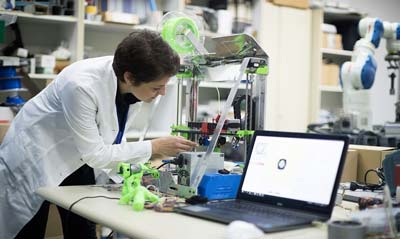
While 3D printing has become a pretty common technology in the modern era, going back to its origins can remind us how far we have come in scientific innovations.
From a mere idea of one or two people in the 1800s to building cars, houses and planes – 3D printing has come a long way!
So let’s see how 3D printing revolution has shaped from its very beginning to its latest milestones and applications.
History – Journey To The First 3D Printer
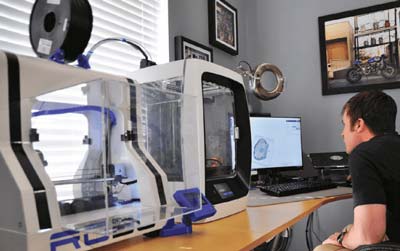
1800s: Ahead Of Its Time
It has not been too long since 3D printing became a reality for us. Till then, it was only a figment of imagination in many scientific fantasies prevalent throughout videos, books and more.
However, there was a visionary in the 1800s who was way ahead of his time! François Willème – a photo-sculptor from France first envisioned making a 3D item digitally in 1859. He used 24 cameras to take photographs of the same object from different angles. This can be seen as the first attempt at 3D scanning technology.
Then an inventor named Joseph E. Blanther got the patent for creating the first 3D topographical mapping method. The concept of creating 3D printed items in layers came from this layering method!
1970s: Liquid Metal Recorder
Liquid Metal Recorder is a device that uses continuous liquid metal ink to build a symbol. Pressure is used to push the electrically conductive ink against a carrier which would then make the desired marks. However, these metal fabrications were removable and thus were made to be used immediately.
This machine was patented in 1971 by Johannes F Gottwald. It is the basis of rapid prototyping through 3D printing and also the manufacturing of such patterns in a controlled way. Its patent described the term “printing” as any formation of ink. So it hinted at the idea that printing can be much more than its traditional use.
Besides, the British chemist and author David Edward Hugh Jones discussed his concepts of 3D printing in the journal called New Scientist in 1974.
1980s: War of Patents
This is the decade where strides in 3D printing technology actually started taking place. In the 1980s we witnessed brilliant minds combatting each other to be the first official inventor of this technology.
Throughout this war of patents, three individual scientists and one group of inventors emerged with their own unique ideas regarding 3D printing methods.
Hideo Kodama
Japanese doctor Hideo Kodama of the Nagoya Municipal Industrial Research Institute was the first one to take an attempt at developing 3D plastic models.
He invented two additive methods in April 1980 which would build those models by using UV rays on thermoset polymers or resins. Kodama used a scanning fiber transmitter or a mask pattern to control these areas of UV exposure.
Even though he filed a patent and published a series of research results on his XYZ plotter, they were not properly valued by his boss and others. With a very limited research budget, his patent rights were abandoned and his project soon faced termination.
Bill Masters
An American entrepreneur by the name of Bill Masters developed Computer Automated Manufacturing Process. It uses computer software’s to give devices instructions on what steps to take for creating a product.
He filed a patent for this system on 2nd July 1984. This patent is considered to be the first patent that laid down the foundation of modern 3D printing systems.
French Inventors
Then came three gifted French inventors named Olivier de Witte, Jean Claude André and Alain Le Méhauté who filed a patent for stereolithography or SLA. This is one of the most common methods used in 3D printing today.
However, both CILAS and the French General Electric Company declined it since the patent allegedly failed to present a business perspective.
Charles Chuck Hull
The final winner of this patent war turned out to be Charles Chuck Hull who filed for SLA patent in 1984 and was granted the patent two years later.
In early 1984, he started a project called R.H. Research or Howtek for developing a colored 2D printer that would use plastic ink. His team conducted rigorous studies on existing technologies and papers related to 3D printing for finally constructing 3D articles.
They succeeded in inventing the SLA apparatus which would create 3D objects by printing their cross-sectional patterns in layers. Based on these patterns, the lasers would create polymers by linking specific molecule chains together.
Hull founded 3D Systems Corporation to develop the first commercial 3D printer named SLA-1. Soon after getting his patent, he launched SLA-1 printers in 1988 to bring this new exciting technology to the general people.
Also see: find most efficient SLA 3D printer from our list.
Major Milestones Since The Inception Of 3D Printing

SLS
As soon as SLA-1 came to the scenario, Carl Deckard also came up with his own rendition of the 3D printing technology called Selective Laser Sintering or SLS. He was only an undergraduate student at the time at the University of Texas. Deckard called his machine Betsy which was essentially the first-ever SLS 3D printer!
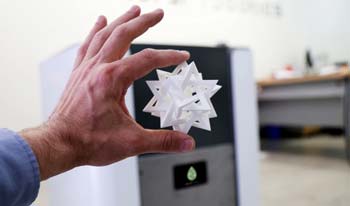
This was a very basic 3D printer that could only produce basic plastic chunks. It was not capable of imprinting impressive details or delivering high-end quality. However, it was an important stepping stone to reach the final stages of the 3D printers’ evolution.
Read More: Difference Between SLA and SLS 3D Printing. Here’s what you need to know about SLA and SLS!
FDM
The Crumps couple – S. Scott Crump and Lisa Crump – invented Fused Deposition Modelling or FDM in 1989. This was a new kind of additive manufacturing process that first melted the polymer filament and then deposited it in layers on the target surface. Through this process, a 3D object was created by the end.
Then the Crumps founded the well-known company named Stratasys which is still incredibly popular among all 3D printing enthusiasts. It is considered to be the simplest form of 3D printing technologies.
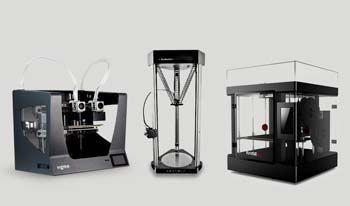
Compared to its predecessors, FDM is capable of including higher precision in 3D printed objects. This is one of the main reasons behind its popularity. Stratasys got its FDM patent approved in 1992 and started revolutionizing the medical sector pretty soon.
Related: our list of top quality FDM printers on the market.
Medical Revolution
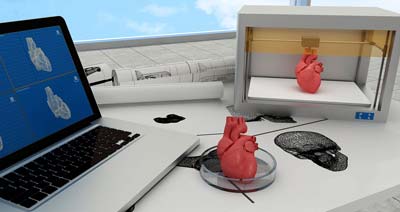
3D printing was used to make a human organ for the first time in 1999. At the end of this illustrious millennium, we saw the artificial bladder implanted successfully into the patients. The scientists of the Wake Forest Institute For Regenerative Medicine helped doing this.
They started with a CT scan of the real bladder, then printing its synthetic biodegradable scaffolds and finally including real cells in it. The resulting tissue was safe for planting into the patients since their immune system cannot reject its own body cells.
From thereon, 3D printing blessed medical science by developing the first fabricated miniature kidney, the first bio-printed blood vessels and the first prosthetic leg with complex components – all in the same decade!
Read More: What is a Raft in 3D Printing? If you’re new to 3D printing, it helps to define terms. Here’s what you need to know about raft!
Self-Building Printers
Within this same decade of the 2000s, 3D printing went open-source so that more scientific minds can access this revolutionary technology. The pioneer behind this initiative was Adrian Bowyer from the University of Bath. He was one of the senior lecturers there in the department of mechanical engineering.
In 2004, Bowyer founded the RepRap project where the 3D printer would be capable of building itself!
These printers were made to print their own components so that they don’t have to depend on other devices anymore. Using them, you could make printers for your friends and vice versa!
The first printer of this series came out in March 2007. It was followed by its siblings called Mendel, Huxley and Prusa Mendel throughout the next few years. Some 3D printers are very helpful for making architectural models.
Print-On-Demand
Another idea that would propel the 3D printing technology further towards commercial motives was Shapeways. This Dutch service launched in 2008 aimed at taking 3D files from its clients, print them out and then shipping the product to respective clients.
It added convenience for the customers since now they didn’t need to buy a 3D printer to make a few pieces.
Besides, they wouldn’t need any hands-on training or technical knowledge for making these orders. As a result, Shapeways became popular pretty fast within the non-tech crowd.
Surely, such an innovative business venture with so much potential could not stay limited to just one nation! Shapeways then expanded to other countries including the USA as a print-on-demand 3D printing company.
Read More: How Long Does it Take to 3D Print a Small Object? We discuss miniatures and printing times in this guide!
Introduction to Prosthetics
In 2008, the world saw new possibilities in the medical sector because of 3D printing. A prosthetic leg was created with this technology and used successfully.
It didn’t need any modification or additional components for assembly. This made people aware of the huge potential 3D printing could have in the prosthetics area.
Kickstarter
The FDM patent expired in 2009 and opened up new doors for innovative initiatives like Kickstarter. This platform truly changed the game of 3D printing by being the first crowdfunding website to financially support projects based on this technology. To date, it is still the largest funding platform for 3D printing projects.
No Limits!
2011 was the year when 3D printing reached its prime by crossing the boundaries of most existing technologies. It started being implemented to build much larger and more ambitious projects which involved automobiles and airplanes!
The first unmanned aircraft ever was built by the University of Southampton from the United Kingdom with an incredibly economical cost of less than $7,000! On the other side of the world, a Candian engineer named Jim Kor built Urbee – a prototype car whose body was 3D printed. Also, SpaceX tries to colonize mars using 3D printer.
Current Applications Of 3D Printing
Medical

3D printing is most extensively used in the field of medical science. It has made organ transplants more secure by matching the new organ with the patient’s unique medical details. Experts can virtually plan each surgery better by using 3D printed instruments.
People can wear custom-fitted 3D printed casts which can also be recycled. Such custom technologies have the biggest impacts on dental, hearing aid, prosthetics and bio-printing fields. During the 2020 Covid-19 pandemic, an Italian company printed 100 respirator valves within 24 hours for hospitals in need.
It can help to rebuild body parts including the face. Researchers are trying to find a way to use this rebuilding capability to replace tissues lost in cancer or arthritis. 3D printing can already implant stem cells for creating new tissues and organs.
Read More: What Causes Stringing in 3D Printing? If you’re using 3D printing at home or for your business, you may have encountered this issue. Learn what it is and how to fix it!
Manufacturing
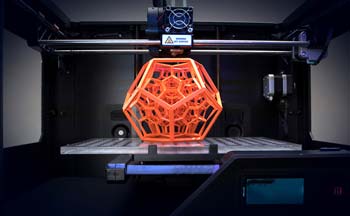
Almost all sections of the manufacturing industry have seen the surge of 3D printing technology in their individual fields. It is now used for rapid prototyping, cloud-based additive manufacturing, food production, mass customization, agile tooling and more.
Automotive
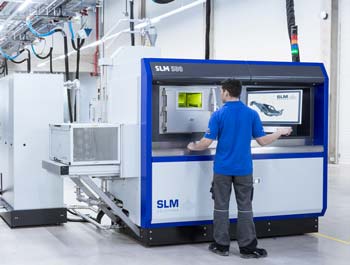
From Urbee, the use of 3D printing in the automotive industry has only increased with time. In 2014, we saw a Swedish supercar with many 3D printed components and a functioning vehicle made entirely with this technology. The next year, the British Royal Air Forces flew with a fighter jet that had printed parts.
Construction
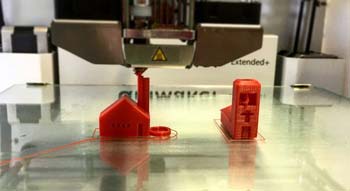
As the cost of 3D printing started to be more affordable, home development and construction began using it to build scale models. This made the production faster without compromising quality. It has been used for fabricating construction components, infrastructures, artificial reefs and more.
Check out our post on SQ4D 3D Printing, a business that prints houses using 3D printing technology!
Conclusion
The revolution of 3D printing has been quite an inspiring sci-fi fairytale for our entire mankind.
Even though its initial concepts were ignored by most experts, this technology has proved itself to be one of the most influential inventions in our current century. It should be exciting to see its new developments from this point.